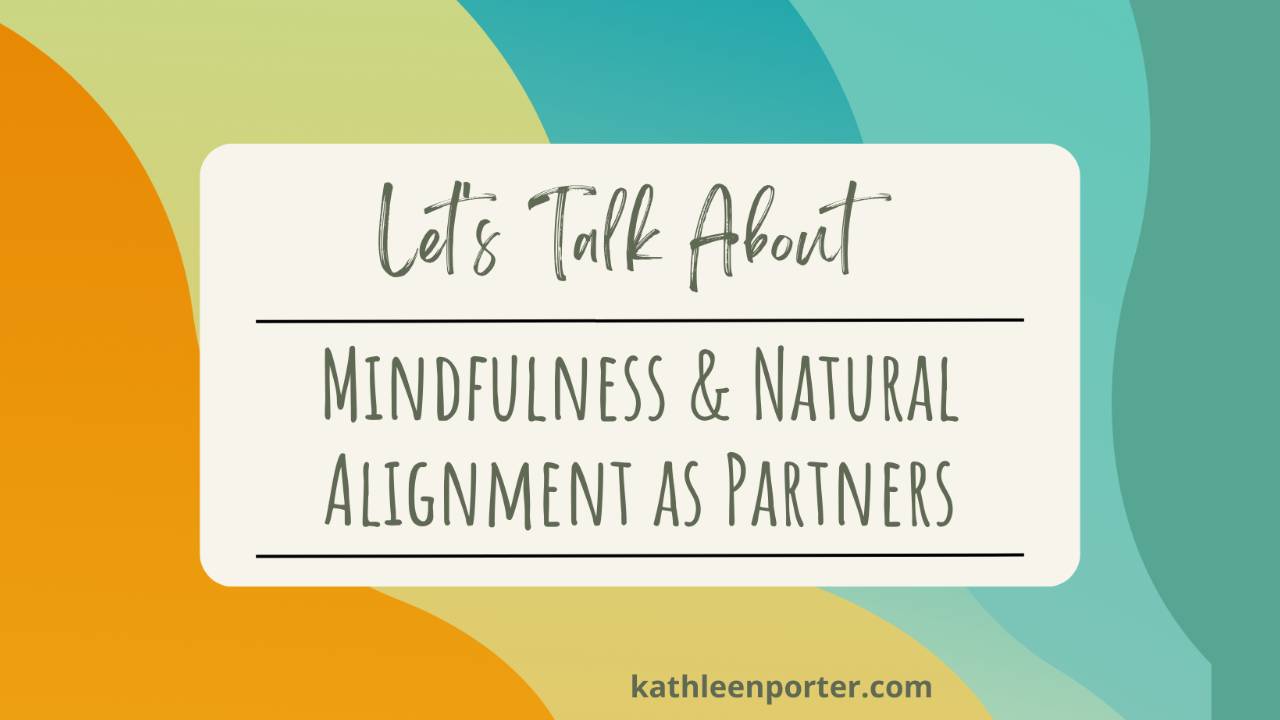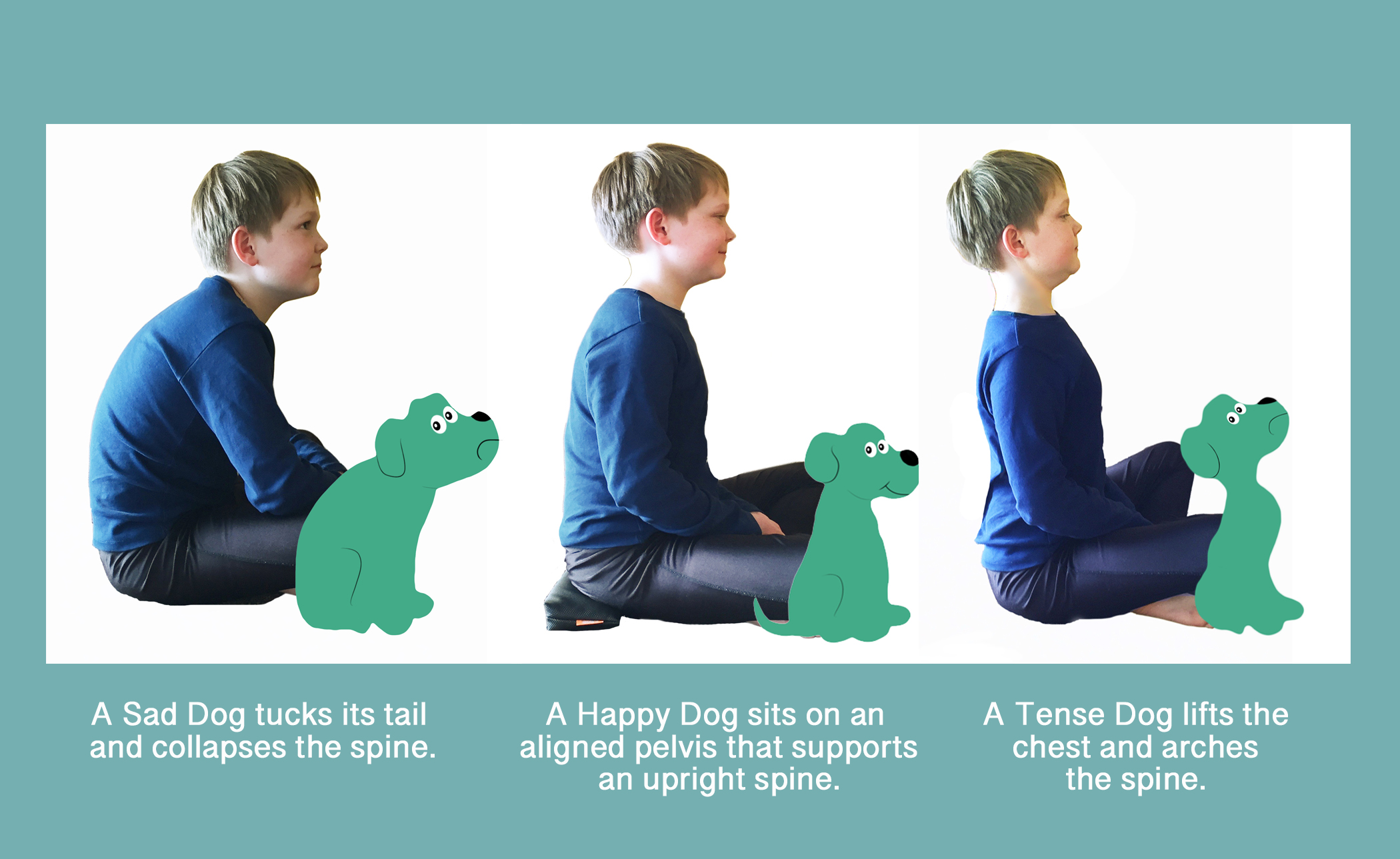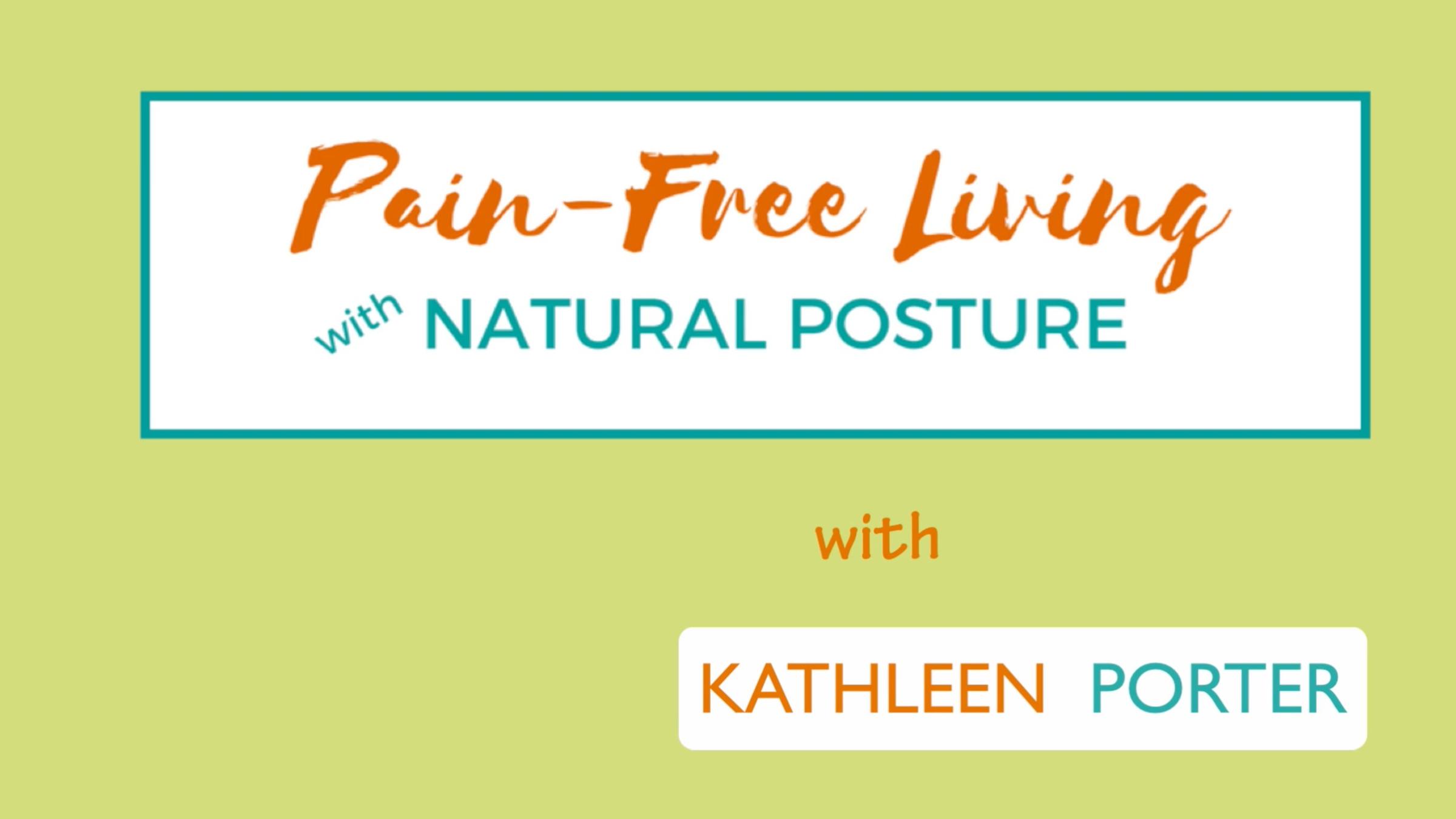Unlocking the Power of Natural Alignment and Mindfulness as Partners

Today I’m excited to dive into a topic that's incredibly close to my heart - the seamless partnership between natural alignment and mindfulness and the ways this can enhance your life. As a long-time student of meditation, going back to the late 1980s, I've benefitted more than I can say by my practices of meditation and natural alignment.
Practicing the two together is pure GOLD!
Learning to inhabit your body so that you are pain-free and move with ease requires mindfulness. Paying attention to yourself in the present moment, without judgment, is the gentle hand that guides you back home to your natural, relaxed, and aligned posture.
Ditto for being mindful, where you bring awareness, without judgment, of whatever you notice—thoughts, sensations, awakening kinesthetic and somatic experiences, which amplify presence and reconnection with your bodymind.
Enhancing the Relationship between Natural Alignment and Mindfulness
The synergy between these two practices expands upon and amplifies the benefits of each one.
- Cultivating mindfulness accelerates our progress in realigning the skeleton by focusing the mind on reinforcing new habits and movement patterns we’re working to incorporate into our being.
- Applying principles of natural alignment as often as we can remember strengthens our capacity for being mindful by training the mind to return to presence in the body—again and again, no matter how often we forget. We can only be present in the body in the here and now—not yesterday, tomorrow, or five minutes ago.
The secret ingredient, whether we are practicing natural alignment or mindfulness individually or both blended as one, is having the willingness to begin again and again and again—all day long, every day.
Our full attention on the body—its sensations, the breath, and its connection with the mind is key to our ongoing success in practicing natural alignment and/or mindfulness.
The Buddha addressed this when he said (just paraphrasing here), “If the body is not mastered, the mind cannot be mastered. If the body is mastered, mind is mastered.”
The Overlooked Truth About Good Posture
Don’t think that just because someone sits for long periods of time meditating they understand what good posture actually is. Even meditation teachers don’t always understand certain details about our innate human alignment, which is why meditation teachers often develop chronic pain problems in joints like knees and hips, as well as back, neck, and shoulder pain.
Meditation can help manage pain, which is why it is often used in hospitals and medical settings to help people cope with chronic pain from various causes. Ironically, pain can be caused by how our bones are arranged when we sit or walk, the two primary physical aspects of Vipassana or insight meditation practice.
I mention this because there’s irony in the fact that people often struggle to develop a mindset for managing the pain they are chronically dealing with, which in many instances is caused by misaligned positions one takes while meditating. Positional pain of this sort can usually be far more easily and effectively overcome by applying principles of natural structural alignment to how we inhabit our body while meditating.
Unfortunately, the widely accepted idea of 'good posture' while meditating often involves lifting your chest up and pulling your shoulders back. This approach demands excessive tension and physical effort to maintain. This misconception has been adopted over many years as the ideal posture, not just in modern American society but in other technologically advanced places.
The result? This kind of unnatural, over-corrected posture, along with slouching and other variations, are the primary culprits behind much of the chronic stiffness and pain people experience.

Sad Dog, Happy Dog, and Tense Dog all came to be when I was teaching posture and alignment to elementary school children. These dogs have been so helpful in imparting understanding of the different positions of the pelvis when sitting, as well as the relationship of the chest / rib cage to the pelvis and how lifting up the chest arches and compresses the spine.
Revolutionizing Healthcare: Teaching Natural Alignment Principles to Medical Students.
It's stunning how often the correct details of natural posture (i.e. skeletal alignment) are overlooked and misunderstood in the medical and wellness communities. We're bombarded with reminders to stand tall and sit up straight, but the true essence of good posture goes far beyond these surface-level cues.
The result? Unnatural, over-corrected posture or its opposite—slouching—along with multiple variations of poor posture, are overlooked as being the primary culprits behind the ever-growing epidemic of chronic stiffness and pain. If only doctors knew this, so much could be done to bring true, lasting relief to millions of patients.
Rediscovering Our Innate Alignment
Evidence-based research needs to be conducted that uncovers the authentic, innate alignment that babies and toddlers instinctively discover on their journey to becoming upright human beings. Learning the details of this is a game-changer for almost anyone, but most especially for finding the key to a life free from chronic stiffness and pain.
📍 Truly good posture is our natural, original, innate alignment that healthy, well-developing babies and toddlers everywhere in the world discover when teaching themselves how to become upright. They're just following instinctive, inner impulses that drive them toward accomplishing nature's mandate for us as upright human beings.
The Rebirth of the Mindful Body
This partnership is more than just a passing trend - it's a transformative journey. I've been fortunate enough to integrate mindfulness and natural alignment into my own life, and the results have been nothing short of astounding.
Learning the details of skeletal alignment greatly boosted my already existing meditation practice. Mindfulness, when combined with alignment, serves as an anchor, guiding us back to the present moment in our bodies over and over again. This practice doesn't just make sitting for extended periods more comfortable, it also takes mindfulness off the cushion and integrates it into our daily lives.
Embracing Mindfulness: Benefits Beyond Measure
In recent years, mindfulness as a conscious art has grown tremendously in popularity. It's now widely taught in hospital settings to help patients manage pain and stress, as well as in school classrooms where students learn to be more calm, attentive, and focused.
Conclusion: The Journey Forward
Join me in this exploration of how mindfulness, when paired with natural alignment, can lead to a more balanced, centered, and pain-free life. Whether you're already on a mindfulness journey or just starting out, practicing mindfulness and natural alignment at the same time is one of the most beneficial things you can ever do for yourself.
Curious to delve deeper? I discuss this powerful partnership in an information-packed free workshop, that includes a sitting exercise so you can experience how being a Happy Dog enhances your ability to sit comfortably for longer periods of time. You can access the free workshop here at any time.
Thank you for being a part of this journey.


